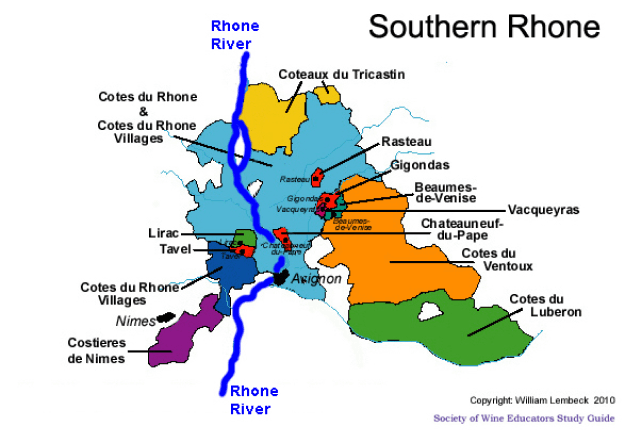Rhone
Southern Rhone
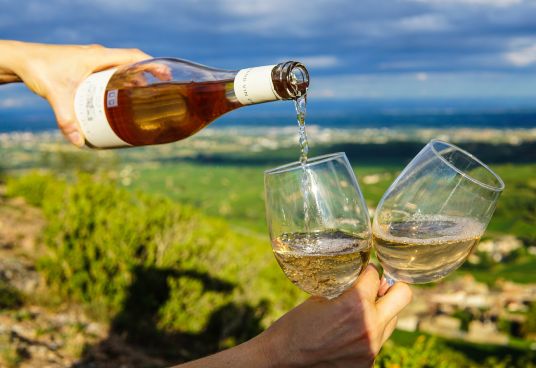
General Information
The Southern Rhone wine region is located in the southeastern part of France. From North to South, its extent is roughly from Montelimar to Nimes, approximately 100 km. From East to West, approximately 70 km from Nimes to Luberon.
The Southern Rhône is a much wider area than the Northern Rhône, this is the reason most of the wines (close to 95%) in the Rhône come from its southern part. In addition, the North Rhône concentrates on one or two grape varieties, while most wines from the south part are blends of many grapes.
Climate
As the Rhône River progresses southward, the valley widens and the climate changes. The region is distinctly more ‘Provençal’ with a Mediterranean influence in culture and climate. The summers are long and warm and the winters are mild; rainfall is less than in the north and the famous Mistral Wind is a major player. This is perfect for the late-ripening Grenache grape. Another unique characteristic of these wines are the nuances of Garrigue – the wild resinous herbs that cover the landscape.
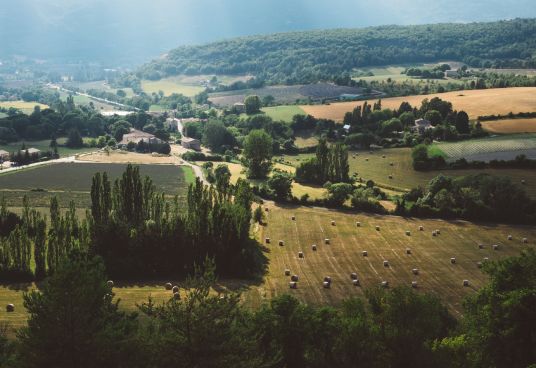
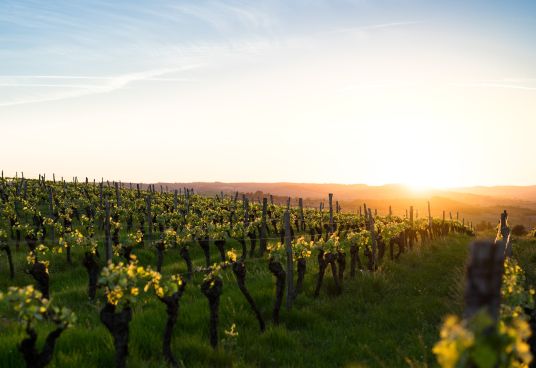
A Wind So Miserable It’s Named “The Mistral”
The Mistral is more than just a cold fierce wind that blows from the Northern seas, it’s an important part of the culture of southern France and Provence. Mistral winds blow at an average speed of 60 mph (hurricanes start at 70!) and do so about 150 days of the year, mostly from winter to early spring. The bad part is that they can be very destructive, damaging or uprooting vines, but they have a good influence too. The winds are always followed by clear bright skies, providing abundant sunshine for the vines. They blow fungus-loving moisture from the grape clusters and, in summer, bring welcome cooler temperatures. Because the Mistral is so strong, the vines need to be staked to withstand its onslaught. However, the improved air circulation inhibits diseases and also reduces the size of the grapes which concentrates their flavors.
The wines are blends of the signature Grenache, with Syrah and Mourvèdre making up
Topography
The southern part of the Rhône near Montélimar has a Mediterranean climate. The soil is a mixture of clay-limestone, molasse( terraces with rounded pebbles), and sand. The main grapes of the South Rhône are Grenache, Syrah, and Mourvèdre (commonly referred to as “GSM”), which are blended with other varieties to produce distinctive wines.
Generally, the southern part is mellower and has a more Mediterranean climate. It can be divided into 3 distinct terroir types:
- Limestone soils give wines balance and precision and are great for white grapes.
- Sandy soils from stone-covered hillsides that are used for Grenache and Syrah grapes produce fruity, light wines.
- Terraces of smooth, rounded stones where Grenache is blended with Syrah and Mourvèdre.
Calcareous soil (e.g. Limestone)
Boosts production of acidity in the grapes. Forces roots deep into the ground in search of nutrients.
Alluvial soil (Blends of sand and clay)
Boosts production of acidity in the grapes. Forces roots deep into the ground in search of nutrients.
Gravel
Low in nutrients. Vines must push deep for nutrients. Results in bold, high quality wines.
Galets roulés (Large, round stones)
Absorbs heat and radiates it back to the vines at night. Controls soil erosion. Retains soil moisture when Mistral blows through the region.
Wine Classifications

Appellation d’Origine Contrôlée (AOC)
AOC means Appellation d’Origine Contrôlée, which is the French wine designation. France created the wine designation system in 1935/36 as a way to control the reputation of wine and other cultural foods.
In the 1990s, the European Union created a new system to offer a uniform labeling protocol. The EU created Protected Designation of Origin (PDO).
Translated into French, PDO becomes AOP meaning Appellation d’Origine Protégée. So an AOC is also an AOP (or PDO in English).
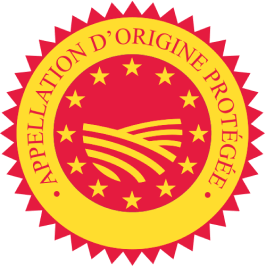
Appellation d’Origine Protégée (AOP)
Appellation d’Origine Protégée (AOP). This classification designates the highest quality of wine (although there is no guarantee). Wines produced in a particular AOP/AOC are subject to strict laws governing, for example, the geographical origin of the grapes, minimum alcohol level, the amount of wine produced per hectare, and methods of production (including the varieties and percentages of grapes used). About 50% of French wines fall into this category. Formerly called Appellation d’Origine Contrôlée (AOC ), a term that is still widely used.
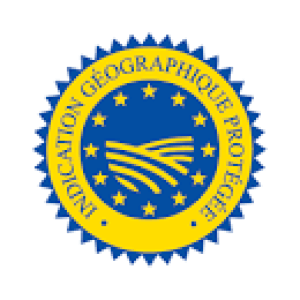
Indication Geographique Protégée (IGP)
Vin de France. These wines can be made from grapes grown anywhere in France and, thus, neither the appellation nor the region is specified on the label. About 20% of production falls into this category and quality varies significantly. Formerly called Vin de Table (VDT).
*The Vin Délimité de Qualité Supérieure (VDQS) wine category, which fell between AOC and VDP wines, was dropped; wines that would have fallen in this category were elevated to AOP wines or lowered to IGP wines.
The National Tasting Project Selected These Regions:
Cotes-du-Rhone
The region offers some of the best values in France and even some first-rate and age-worthy reds. Red wine varieties include most of the Chateâuneuf-du-Pape varieties like Grenache, Syrah, Mourvedre, Cinsault, and Counoise, as well as Carignan. White grapes grown include Grenache blanc, Roussanne and Viognier, among others.
Cotes-du-Rhone is the geographic area that includes both northern and southern Rhone. It is a lower cost appellation since grapes can be sourced from anyplace in the Rhone.
Cotes-du-Rhone Villages
An appellation for red, rosé and white wines from certain villages of the Rhône region of France. All are in the southern half of the region, to the east and immediate west of the town of Orange.
Wines made under the appellation must meet higher standards than those of the generic Côtes de Rhône title. They are from vineyards in areas that show potential to produce distinctive wines of good quality.
The Côtes du Rhône Villages appellation was introduced in 1966 and now applies to 22 villages.
Red Côtes du Rhône Villages wines must, as a minimum, contain Grenache and one of the two other main varieties (Syrah and/or Mourvèdre). All three are regularly present in these wines and in any combination (albeit with Grenache still present) these main varieties must constitute at least two-thirds (66 percent) of any red wine.
Secondary red grapes run to a long list (red wine vineyards can even contain up to five percent white varietals) but include Carignan (Carinena), Cinsaut, Counoise, Muscardin and Terret Noir, among others.
Red wines of the appellation are moderately rich in style, with dark fruit flavors and the spice of Syrah ever present. They are generally slightly tannic, but this varies by vintage and according to the particular terroir of the village in question.
White Côtes du Rhône Villages wines are generally made in a fresh, dry style and have a tangy, floral profile. They are predominantly made from Grenache Blanc, Clairette, Marsanne, Roussanne, Bourboulenc and/or Viognier (the principal white varieties).
Production rules for white wines are less stringent than for their red counterparts with the appellation regulations stipulating that the principal white varieties must make up the majority of the wine.
Châteauneuf-du-Pape
Famous for its full-bodied, seductive and spicy reds with flavor and aroma characteristics reminiscent of black cherry, baked raspberry, garrigue, olive tapenade, lavender and baking spice, Châteauneuf-du-Pape is the leading sub-appellation of the southern Rhône River Valley. Large pebbles resembling river rocks, called “galets” in French, dominate most of the terrain. The stones hold heat and reflect it back up to the low-lying gobelet-trained vines. Though the galets are typical, they are not prominent in every vineyard. Chateau Rayas is the most obvious deviation with very sandy soil.
This was the very first AOC to be recognized when the system was instituted in 1936.
According to law, eighteen grape varieties are allowed in Châteauneuf-du-Pape and most wines are blends of some mix of these. For reds, Grenache is the star player with Mourvedre and Syrah coming typically second. Others used include Cinsault, Counoise and occasionally Muscardin, Vaccarèse, Picquepoul Noir and Terret Noir.
Only about 6-7% of wine from Châteauneuf-du-Pape is white wine. Blends and single-varietal bottlings are typically based on the soft and floral Grenache Blanc but Clairette, Bourboulenc and Roussanne are grown with some significance.
The wine of Chateauneuf-du-Pape takes its name from the relocation of the papal court to Avignon. The lore says that after moving in 1309, Pope Clément V (after whom Chateau Pape-Clément in Pessac-Léognan is named) ordered that vines were planted. But it was actually his successor, John XXII, who established the vineyards. The name however, Chateauneuf-du-Pape, translated as “the pope’s new castle,” didn’t really stick until the 19th century.
Gigondas
Gigondas is a village in the southern Rhône valley and an appellation for red and rosé wines. Both are made from up to 80 percent Grenache (according to the appellation laws), with at least 15 percent comprised of Syrah and Mourvèdre. Any Gigondas wine may have a maximum of 10 percent of any variety sanctioned by the standard red Côtes du Rhône appellation laws, with the exception of Carignan.
The resulting style of wine made under the appellation is often likened to that of Châteauneuf-du-Pape, just 17 kilometers (10 miles) to the southwest. Red wines are typically bold, forward, ripe and relatively high in alcohol – in fact, the appellation laws require a minimum alcohol level of 12.5 percent, one of the highest stipulated for French red wine. The best examples can certainly match many bottlings from its more famous neighbor.
The quality measures taken in the creation of Gigondas’ wines include the mandatory selection of healthy grapes over imperfect grapes, known in French as triage. Maximum yield is set at 36 hectoliters per hectare, only 1hl more than Châteauneuf-du-Pape (385 vs 374 US gallons per acre).
The appellation occupies an area covering the base and slopes of the first Dentelles de Montmirail foothills. The villages of Beaumes-de-Venise and Vacqueyras are located to the south and west of Gigondas respectively and enjoy very similar growing conditions. The terroir here is characterized by a hot, dry Mediterranean climate and by the combination of limestone soils (on the Montmirail slopes to the east) and rocky, sandy, free-draining soils (on the flatter, lower-lying land to the north and west).
Rasteau
Rasteau is a village in the southern Rhône valley, located roughly 24 kilometers (15 miles) northeast of the famous Châteauneuf-du-Pape appellation. The village and its vineyards are perhaps best known for their sweet red vin doux naturel, but they also produce dry red, rosé and white varieties.
For a long time, the village’s dry wines were made under the Côtes du Rhône Villages Rasteau appellation. Thanks to the determination of the winegrowers these highly regarded wines were promoted to full, independent AOC status in July 2010 and are now sold as “Rasteau”.
Rasteau itself is located on the banks of the Ouvèze river (a tributary of the Rhône), just northeast of the town of Orange. Vineyards are commonly found on slopes with a south-facing aspect, offering some protection from the famous Mistral wind blowing down the wider Rhône valley from the north.
Clay and limestone based soil types dominate the area of Rasteau of which is notorious for variations in soil composure, making choice of rootstock an all-important one. Vineyards are commonly covered in rounded cobbles of which retain heat and offer some protection from evapotranspiration.
The climate here is Mediterranean, with hot, dry summers bringing excellent ripening potential to Grenache, Syrah and Mourvèdre. These varieties are used in the production of the region's high-quality red table wines.
Baumes-de-Venise
Located at the foot of the Dentelles de Montmirail, Beaumes de Venise is a particularly warm appellation sheltered from the Mistral, the famously frigid northerly winds of the Rhône.
Muscat thrives in the dry heat and arid soils here, and Beaumes de Venise is perhaps best known for its vin doux naturel. Unlike those of Rasteau, these are youthful, delicately fortified sweet wines made from the intensely floral, fruity grapes.
Despite limited distribution stateside, the 150 or so winegrowers of Beaumes de Venise actually produce more than three times as much red wine than vin doux naturel. Since 2005, its red wines have been designated to cru status as well. Both styles are priced well in relation to quality.
Grenache and Syrah, which dominate the red wines here, can be potent and haunting in perfume. Intensely fruity and ripe, they’re approachable in their youth, but the wines are also structured with firm tannins that reward cellaring.
The National Tasting Project Selected These Regions:
How Do You Say Appellations?
Regions of Rhone
